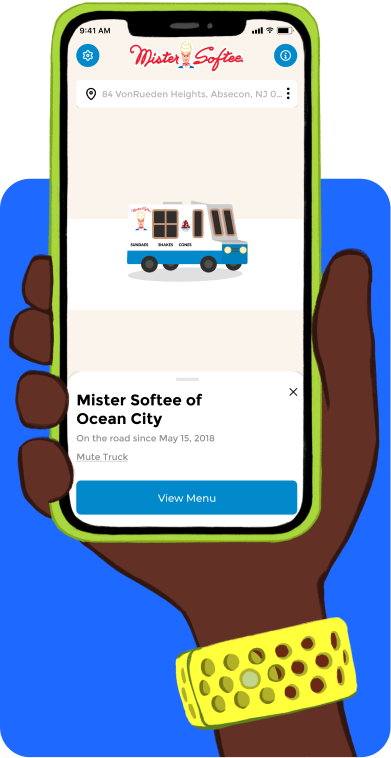In the US, we have been seeing corporations start to demand that their workers come back to the office for over a year. After years of functional remote work, this is a tough sell.
Amidst the skyrocketing prices of everything, including gas, and a pandemic that is still somewhat ongoing, it is possibly the hill that some companies will die on.
Apple’s inflexible Return to Office Policy caused some employees to leave the company entirely, for example. If even the prestigious Apple can’t keep people, that is bad news for other employers.
According to data from Staffing firm Robert Half, 65% of local managers in DC were pushing for workers to be full-time in office. At the same time, half of employees said that if they had to return to the office full-time, they would quit.
Even following the Great Resignation, American companies are refusing to change. They are not willing to respect the wishes of workers.
While some US corporations are demanding that everyone return, blue-collar workers and even physical laborers in other countries are still working from home. Smart tech and clever empathetic thinking are leading the way around the world.
Let’s take a look at how the world is embracing remote work.
Will Remote Work Expand Across Blue-Collar and Labor-Intensive Jobs?
Computerworld contributor and Digital Nomad Mike Elgan asked this question after he saw something interesting while living in Morocco.
In the Moroccan countryside, many women work to process argan nuts into the famous Moroccan argan oil. A lot of them work from home.
They have been throughout the whole pandemic too. The Argan industry in Morocco has learned that this arrangement benefits both workers and employers.
Workers have time to make their own schedules and tend to their responsibilities outside of work. This flexibility means that businesses retain workers. They also no longer have to find large communal workspaces.
Before the pandemic, large groups of women would sit together. They would do the painstaking work of cracking the argan nuts properly.
Now, collectives deliver the nuts to workers’ homes. Then, they pick them up at the end of the day after they have been cracked and dried.
The Blue-Collar Remote Work Revolution Has Begun
Japan is leading the way here. They are using tech to make blue-collar jobs easier, more accessible, and even entirely remote in the future.
A Japanese convenience chain store called FamilyMart is pushing the limits of virtual work. They are experimenting with using remotely controlled robots to stock shelves.
Using a VR system, employees could work stocking shelves from just about anywhere. This also opens up this job to those who are physically disabled.
Another example of this is American heavy equipment maker Cat. Their tools and vehicles are commonly used for dangerous jobs in a wide variety of industries. This includes construction, forestry, mining, agriculture, and defense.
Cat is working on developing remote-control equipment to keep workers out of harm’s way in risky work environments. Imagine if, in the future, road work was performed remotely, for example.
Of course, not all work can be performed remotely. However, we are looking at a present and future where more and more work is. And this includes more people and industries than you might think.
Overwhelmingly, American workers demand it.

Why More Blue Collar US Employers May Be Forced To Embrace Remote Work
There has been a lot of speculation on what exactly has led to the Great Resignation and shifting dynamics between workers and employers in the US.
It is complex. However, this one factor is not explored a lot in the media. The truth is that many workers in blue-collar industries spent the pandemic transitioning into white-collar work.
After years of being told to “just get better jobs” if they don’t like poor treatment and lower wages for more physically demanding work, many did.
According to a report by the Oliver Wyman Forum:
“Despite being front and center during the spread of Covid-19, the well-being of blue-collar workers took a back seat. Most clocked hours in person -– putting themselves and their loved ones at risk –- while they watched their white-collar counterparts migrate to comfortable and safe remote setups, with their jobs and pay protected.”
Many came to feel that their employers did not care if they lived or died. This is not incredibly motivating.
The Source of Supply Chain and Worker Shortage Issues?
Some common problems you have heard about lately are likely “supply chain issues” and the “worker shortage.”
It is harder to get car parts and medical supplies. At many restaurants and stores, waits are long or the stores are in disarray because they “can’t find employees” or “no one wants to work anymore.”

Research by Brad Hershbein, an economist at the W.E. Upjohn Institute for Employment Research, shows that it’s because many people have left these jobs entirely for white-collar work.
In fact, they report that 4 out of every 5 people who tried successfully transitioned.
Using U.S. Census Bureau data for the three months through November, he calculates that between 6.5% and 8.4% of blue-collar workers from construction, transportation, and production who changed their jobs moved to white-collar professions.
The Answer? Future Tech and Pragmatic Empathy
Many companies are currently working on innovative remote work solutions. One of them is Avaya.
Avaya Spaces is a basic app that is powered by communications-platform-as-a-service (CPaaS), a cloud-based delivery model that allows organizations to add voice, video, and messaging features to their existing business software using APIs.
Microsoft is also trying to approach these new challenges via tech:
In response to a working world with new needs, Microsoft is working on Microsoft Mesh, a mixed reality platform powered by Azure. It allows developers to build apps quickly and easily for cross-platform remote meetings.
The Benefits of Tech For All
However, as we have seen with the workers who process Argan nuts in Morocco, this is not only a question of applying technology.
It is a question of companies being willing to apply pragmatic empathy to their operations and make changes to attract and retain workers.
Workers who do the important physical labor which keeps society going day-to-day are amongst the most disrespected and lowest-paid in the global workforce. This is also true in the US.
In the US, we are experiencing the consequences of decades of this value system firsthand.
Foreward thinking American companies like Cat are already working to address this by improving job conditions using technology.
Final Thoughts on the Remote Work Revolution
The pandemic has sparked a widespread transformation in the power dynamics between workers and employers.
The companies that recognize this and embrace it are ahead of the curve, while many of those that refuse to engage with the new reality of work are experiencing issues.
For example, the American fast-food chain Raising Cane’s had to send its corporate staff into its restaurants to work during the pandemic due to the labor shortage.
Of course, some jobs cannot be done remotely. But, many more can be done remotely than many major corporations are quick to admit.
Many corporations that want workers back in the office have been making the odd argument, after over 2 years of functional remote work, that remote work is impossible.
For example, Ex-Google CEO Eric Schmidt told CNBC:
“I don’t know how you build great management virtually.”
At Chop Dawg, we have been a thriving virtual-only company for over a decade. Around the world, many other companies of all kinds are finding ways to make WFH work for them. And it’s not just companies in tech.
Data even shows that the majority of workers would take a pay cut if it meant they could work from home. This is likely partially because the costs of getting to work or so high.
Most Americans especially do not have access to reliable public transportation, meaning that they would have to pay for a car, car vehicle maintenance, and gas. Depending on their wage, this alone might take such a large chunk out of their salary that many jobs are simply not worth the cost it would take to get there.
Companies may have to accept these new worker demands if they want to attract and retain talent across industries.
What do you think? Comment below.
Since 2009, we have helped create 350+ next-generation apps for startups, Fortune 500s, growing businesses, and non-profits from around the globe. Think Partner, Not Agency.
Find us on social at #MakeItApp’n®

















